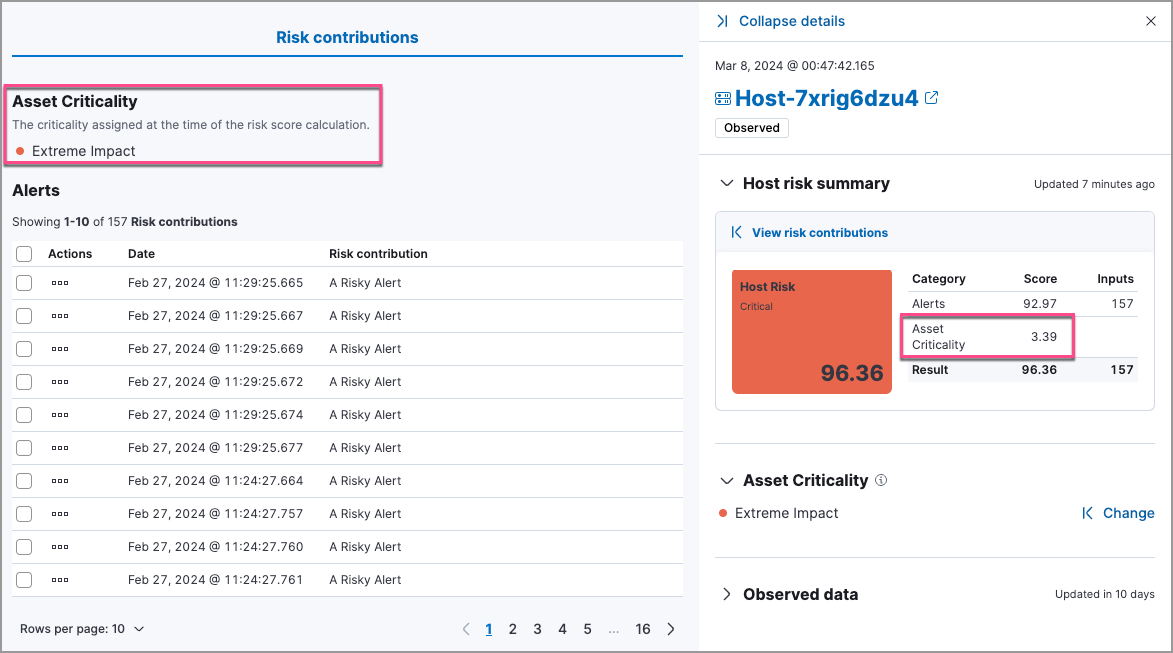Asset criticality
editAsset criticality
editThe asset criticality feature allows you to classify your organization’s entities based on various operational factors that are important to your organization. Through this classification, you can improve your threat detection capabilities by focusing your alert triage, threat-hunting, and investigation activities on high-impact entities.
You can assign one of the following asset criticality levels to your entities, based on their impact:
- Low impact
- Medium impact
- High impact
- Extreme impact
For example, you can assign Extreme impact to business-critical entities, or Low impact to entities that pose minimal risk to your security posture.
View and assign asset criticality
editEntities do not have a default asset criticality level. You can view, assign, and change asset criticality from the following places in the Elastic Security app:
-
The host details page and user details page:

-
The host details flyout and user details flyout:

-
The host details flyout and user details flyout in Timeline:

Improve your security operations
editWith asset criticality, you can improve your security operations by:
Prioritize open alerts
editYou can use asset criticality as a prioritization factor when triaging alerts and conducting investigations and response activities.
Once you assign a criticality level to an entity, all subsequent alerts related to that entity are enriched with its criticality level. This additional context allows you to prioritize alerts associated with business-critical entities.
Monitor an entity’s risk
editThe risk scoring engine dynamically factors in an entity’s asset criticality, along with Open and Acknowledged detection alerts to calculate the entity’s overall risk score. This dynamic risk scoring allows you to monitor changes in the risk profiles of your most sensitive entities, and quickly escalate high-risk threats.
To view the impact of asset criticality on an entity’s risk score, follow these steps:
- Open the host details flyout or user details flyout. The risk summary section shows asset criticality’s contribution to the overall risk score.
- Click View risk contributions to open the flyout’s left panel.
- In the Risk contributions section, verify the entity’s criticality level from the time the alert was generated.
The risk summary and Risk contributions sections display an entity’s asset criticality from the latest risk scoring execution. If you change the asset criticality level, subsequent risk calculations will automatically factor in the newest criticality level.
